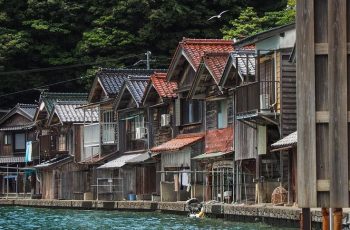Japan is a land of breathtaking contrasts. It’s a country where the hyper-modern gleam of a Tokyo skyscraper stands in the shadow of an ancient, moss-covered shrine; where the quiet dignity of a tea ceremony coexists with the vibrant chaos of a pop-culture festival. But beneath this polished surface, another, older world slumbers. This is the Japan of Yurei (vengeful ghosts), of Onryo (wrathful spirits), and of places so saturated with sorrow, tragedy, and malevolence that they have become permanent scars on the landscape.
These are not the kind of places you find in a glossy travel brochure. They are locations whispered about in hushed tones, their stories passed down as chilling bedtime stories and terrifying urban legends. They are pockets of the world where the veil between the living and the dead is worn thin, where history’s screams have not yet faded. While the thrill-seeker in you might be tempted, listen to the warnings. These are the scariest places in Japan, and you should never, ever visit them.
1. Aokigahara Forest: The Sea of Trees
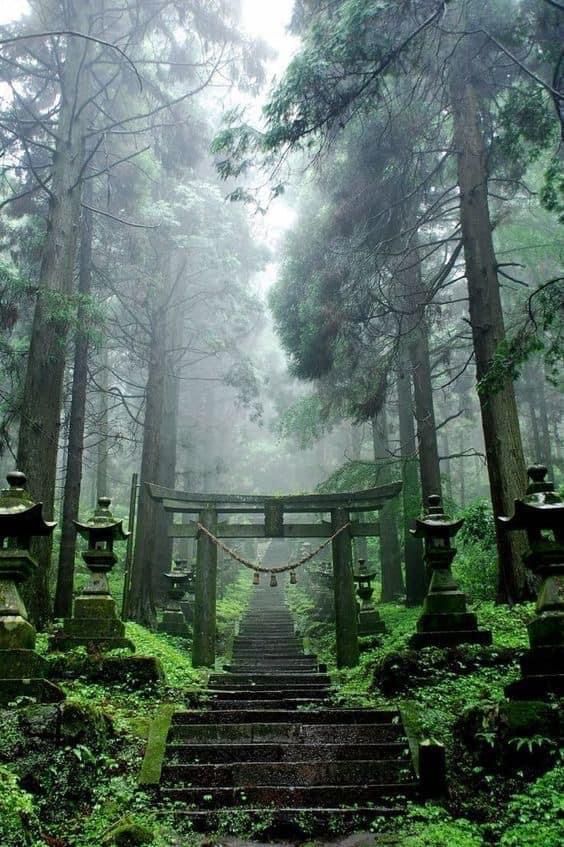
At the northwestern base of the majestic Mount Fuji lies a forest unlike any other on Earth. Aokigahara, known as Jukai or “The Sea of Trees,” is a sprawling, 30-square-kilometer woodland born from a massive volcanic eruption in 864 AD. The forest floor is a twisted mass of volcanic rock and tangled roots, covered by trees so dense they block out the sun and swallow all sound.
From the outside, it can seem eerily beautiful. But step inside, and the atmosphere changes. An oppressive silence descends, broken only by the creaking of wood and the wind sighing through the canopy. The volcanic soil is rich in magnetic iron, which famously renders compasses, GPS, and even cell phones useless. It’s a place where it is terrifyingly easy to become lost. But getting lost is not the primary fear associated with Aokigahara.
For decades, this beautiful, silent forest has earned a more sinister reputation: “The Suicide Forest.” It has become one of the most common sites for suicide in the world, a place where people go to end their lives in absolute solitude. The reasons are complex, rooted in historical novels and a growing, tragic trend. The result is a forest imbued with an almost unimaginable level of sadness and despair.
Those who have ventured off the designated paths (something strongly discouraged) report a palpable sense of being watched. They speak of hearing mournful whispers carried on the wind and seeing fleeting, spectral figures darting between the gnarled trees. Personal belongings—a single shoe, a faded photograph, a tattered book—are often found, grim testaments to the forest’s history. It is said the spirits of those who died here, known as yurei, are unable to leave. They are trapped, endlessly wandering the silent labyrinth, their anguish seeping into the very soil.
Local folklore adds another layer of terror. Legends speak of ubasute, the ancient and apocryphal practice of carrying an elderly relative into a remote place and leaving them to die during times of famine. It’s believed the first ghosts of Aokigahara were these abandoned souls, their angry spirits luring travelers to their doom.
The Japanese government has placed signs throughout the forest entrance, urging visitors to reconsider their actions and offering help. But the forest’s reputation precedes it. Aokigahara is not a place for ghost hunting or morbid curiosity. It is a vast, natural tomb, a place of profound and active sorrow. To enter it is to walk through a landscape of human tragedy, and it is said that the forest’s despair can cling to you long after you’ve left its suffocating canopy.
2. Inunaki Village: The Legend That Refuses to Die

Inunaki, or “Howling Dog Village,” is the stuff of pure, unadulterated urban legend—a ghost story so potent it has blurred the lines between fiction and a terrifying reality. The legend is simple and chilling: deep in the mountains of Fukuoka Prefecture, past a dark and forbidding tunnel, lies a village that time forgot. It is a place cut off from the rest of Japan, a lawless enclave where the villagers are violent, hostile, and rumored to be the product of generations of inbreeding.
At the entrance to the village, a crudely written sign is said to declare: “The constitution and laws of Japan do not apply here.”
According to the legend, anyone who enters is never seen again. The stories claim that all electronic devices cease to function the moment you pass the sign. The villagers, hostile to outsiders, will hunt you down. Some versions speak of cannibalism, of bizarre rituals, and of a community so steeped in madness that escape is impossible.
So, does Inunaki Village actually exist? The answer is both no, and a terrifying yes. There is no functioning, lawless village as described in the legend. However, the story is rooted in a real place. The original Inunaki Village was a small community of lumberjacks and farmers established in the Edo period. In 1970, construction began on the Inunaki Dam, and the entire village was submerged, its residents relocated. All that remains of the old community is at the bottom of a man-made lake.
The focal point of the modern-day horror, however, is the Old Inunaki Tunnel. This real, now-sealed tunnel has become the nexus for the legend’s paranormal activity. The tunnel was the site of a gruesome murder in 1988, where a group of youths abducted and killed a man, burning his body inside. This real-life atrocity cemented the tunnel’s reputation as a cursed and violent place.
Before it was sealed, visitors reported a litany of terrifying experiences. Cars would stall without reason, disembodied screams would echo from the darkness, and shadowy figures were seen lurking just at the edge of the flashlight’s beam. The most feared phenomenon was the sound of a howling dog—the village’s namesake—which was said to be a harbinger of doom.
Today, the tunnel’s entrance is sealed with concrete blocks, but the legend of the village that “does not exist” is more powerful than ever. It inspired the 2019 horror film Howling Village, bringing the terror to a new generation. The allure of the forbidden is strong, but Inunaki is a place where a campfire story has been fed by real tragedy. The blocked tunnel isn’t just keeping people out; it feels like it’s trying to keep something in.
3. Gunkanjima (Hashima Island): The Ghost Battleship
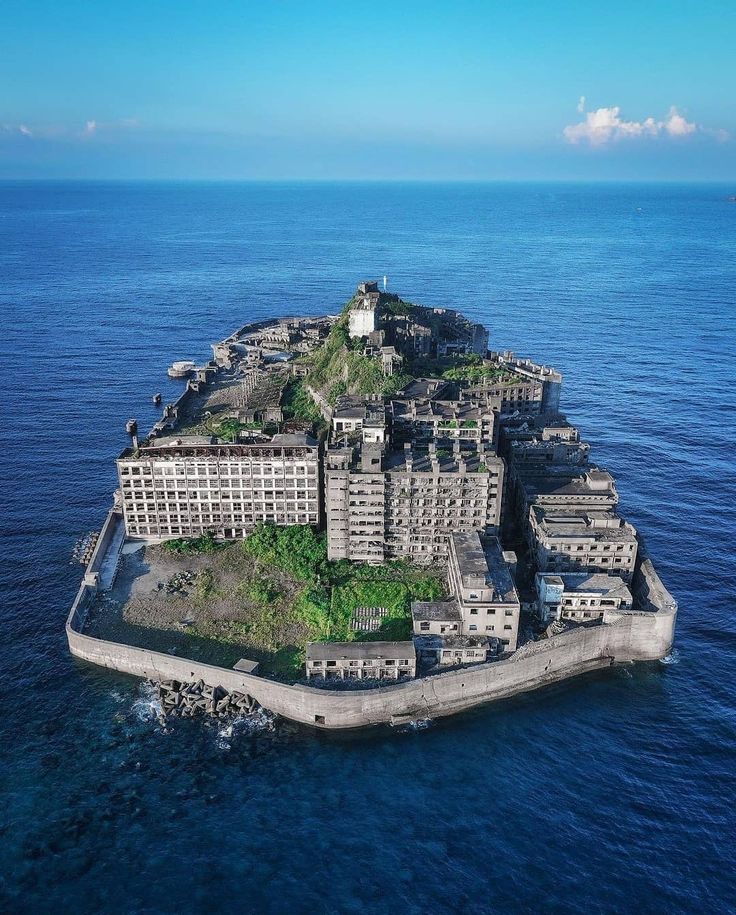
Floating off the coast of Nagasaki is an island that looks like a decaying concrete battleship adrift on the sea. This is Hashima Island, more famously known as Gunkanjima (“Battleship Island”). Once the most densely populated place on Earth, it is now one of its most haunting and desolate.
In the late 19th century, coal was discovered beneath the island, and a massive mining operation began. To house the thousands of workers and their families, a city of concrete was built. Apartment blocks, a school, a hospital, a cinema, and shops were all crammed onto this tiny rock. For decades, it was a bustling, self-contained world, a testament to Japan’s rapid industrialization.
But this prosperity had a dark underbelly. During World War II, thousands of conscripted Korean and Chinese civilians were forced to work in the mines under brutal, slave-like conditions. They toiled in sweltering, dangerous tunnels deep beneath the ocean floor. Over a thousand are said to have died from exhaustion, malnutrition, accidents, and abuse. Many who tried to escape drowned in the treacherous waters surrounding the island.
In 1974, as petroleum replaced coal as Japan’s primary energy source, the mine was closed. The shutdown was sudden. The residents were given mere weeks to evacuate. They left almost everything behind.
Today, Gunkanjima is a city frozen in time, ravaged by typhoons and the salty sea air. In the abandoned apartments, 1970s-era televisions sit in corners, and tables are still set for a meal that was never finished. In the school, textbooks lie open on desks, their pages yellowed and warped. The wind whistles through shattered window panes, creating a constant, mournful symphony. It is a ghost town in the most literal sense—the ghost of a community ripped away overnight.
The hauntings of Gunkanjima are not of the jump-scare variety. Instead, visitors (who can only access small, restricted parts of the island on official tours) report an overwhelming feeling of oppressive sadness and despair. It’s the collective psychic residue of thousands of lives lived in harsh conditions, and the lingering agony of those who died in the mines. People have reported hearing faint whispers in Korean and Chinese, the disembodied sounds of coughing from the direction of the old hospital, and seeing spectral figures staring out from the empty windows of the high-rise apartments.
Gunkanjima is a powerful, sorrowful monument to both industrial ambition and human suffering. The real horror isn’t a single ghost, but the crushing weight of a thousand forgotten tragedies.
4. Oiran Buchi Bridge: The Bridge of Weeping Courtesans
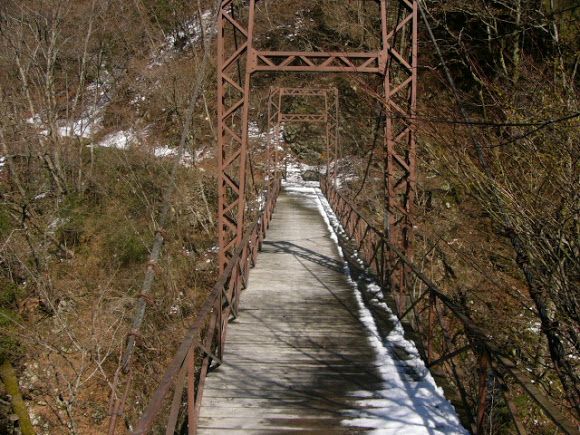
Deep in the mountainous region of Yamanashi, a winding road leads to a picturesque gorge. Spanning this chasm is the Oiran Buchi Bridge, a modern structure with a name that hints at a horrific past. Oiran were high-ranking courtesans in feudal Japan, and buchi means “abyss” or “pool.” This is the Abyss of the Courtesans, and its story is one of greed, betrayal, and mass murder.
The legend dates back to the 16th century, during Japan’s Warring States period. The powerful Takeda clan operated a secret gold mine in the area, and to keep the miners’ morale high, they established a brothel staffed by 55 beautiful oiran. The courtesans lived a life of relative luxury, entertaining the miners and becoming privy to the secret location of the lucrative mine.
However, when the Takeda clan faced a devastating defeat at the Battle of Nagashino, their power crumbled. The remaining clan retainers, desperate to protect the secret of the gold mine from their enemies, decided that the 55 oiran were a liability. They couldn’t be allowed to fall into enemy hands and reveal the mine’s location.
What happened next was an act of shocking cruelty. The guards organized a “party” for the courtesans on a temporary wooden stage built out over the gorge. As the women were dancing and celebrating, the guards took axes and cut the ropes supporting the platform, plunging all 55 women to their deaths on the sharp rocks and raging river below.
It is said that their dying screams echoed through the valley for hours.
Today, the area is considered one of the most haunted places in Japan. Locals and brave visitors report hearing the distinct sounds of women weeping and screaming, rising up from the bottom of the gorge, especially on rainy nights. Ghostly apparitions of women in elaborate kimonos are said to appear on the bridge, only to vanish. An overwhelming feeling of sorrow and betrayal permeates the air. Legend says the river water turned red for days after the massacre, and that the vengeful spirits of the oiran will try to lure men to their deaths over the side of the bridge.
Oiran Buchi is a place where beauty and brutality are forever intertwined. The scenic gorge holds the memory of a terrible crime, and the ghosts of the 55 betrayed women ensure that their story is never forgotten.
5. The Round Schoolhouse, Hokkaido: A Circle of Fear
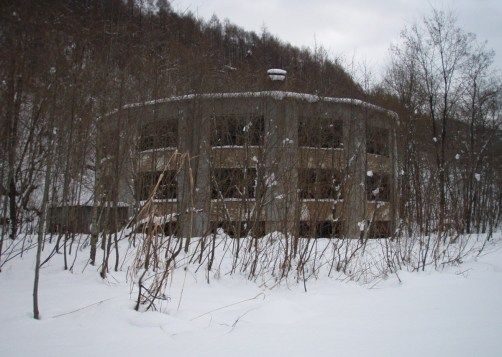
In the remote, snow-swept landscape of Hokkaido, Japan’s northernmost island, stands a bizarre and unsettling ruin: the former Bankei Elementary School, better known as the Round Schoolhouse. Built in the early 20th century, this circular, two-story building is an architectural anomaly, and its abandonment has turned it into a magnet for ghost stories and paranormal investigators.
The school was closed in the 1970s due to a dwindling population, and it has been left to decay ever since. The circular design, intended to be innovative, now feels disorienting and sinister. There are no corners to hide in, only an endless, curving hallway that seems to lead back to itself. The collapsed roof allows snow and rain to pour into the central courtyard, and the classrooms are filled with debris, overturned desks, and the ghosts of childhood memories.
The legends surrounding the Round Schoolhouse are numerous and bleak. One story claims that a young boy died after falling from the roof, and his playful but malevolent spirit now haunts the halls, tripping visitors and whispering in their ears. Another, darker tale speaks of a teacher who took their own life in one of the classrooms, and whose despondent apparition is still seen staring out of a broken window.
The most pervasive legend, however, is that the school was used as a shelter during a fierce blizzard, but the inhabitants were trapped and eventually froze or starved to death. Their spirits are said to remain, and visitors report sudden, inexplicable drops in temperature, even on warm days. They hear the phantom laughter of children echoing in the empty classrooms, followed by terrified screams.
Explorers of the ruin have documented doors slamming shut on their own, objects being thrown by an unseen force, and the unnerving feeling of being followed down the curved corridors. The circular shape is said to disorient not just the living, but also the dead, trapping the spirits within its endless loop. It’s a place where innocence has rotted away, leaving only a cold, circular dread.
Conclusion: The Echoes in the Dark
Japan’s haunted places are more than just frightening locations; they are raw, open wounds on the country’s soul. They are places where the past is not past, where emotions of sorrow, rage, and despair have become so powerful they have defied the passage of time. From the tragic silence of Aokigahara to the vengeful screams of Oiran Buchi, these sites serve as a potent reminder that some stories are written in more than just ink—they are etched into the very earth.
Whether you are a staunch believer in the paranormal or a hardened skeptic, the sheer weight of human tragedy associated with these locations is undeniable and deeply unsettling. They challenge our modern sensibilities and force us to confront the darker aspects of history and human nature.
